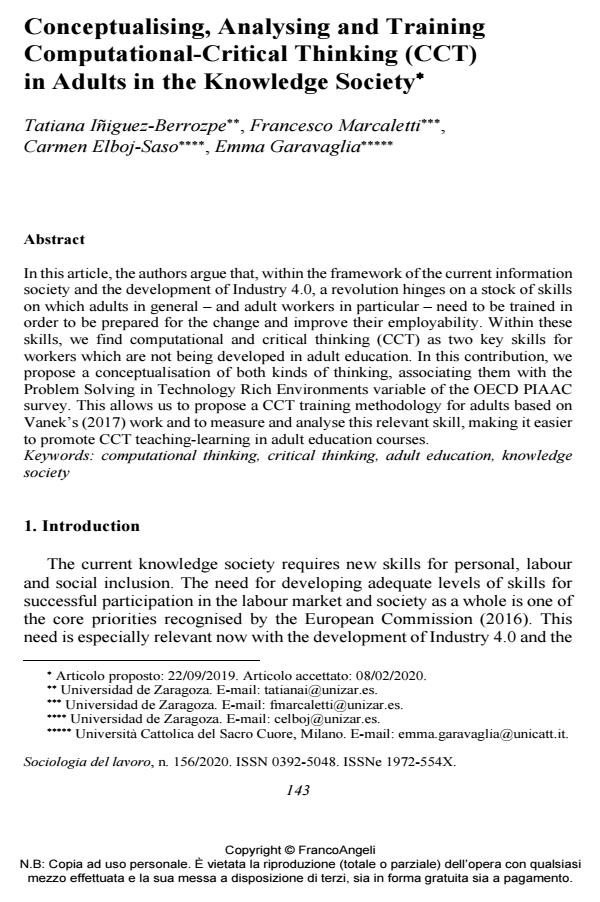Conceptualising, Analysing and Training in Adults in the Knowledge Society
Journal title SOCIOLOGIA DEL LAVORO
Author/s Tatiana Iñiguez-Berrozpe, Francesco Marcaletti, Carmen Elboj-Saso, Emma Garavaglia
Publishing Year 2020 Issue 2020/156
Language English Pages 27 P. 143-169 File size 341 KB
DOI 10.3280/SL2020-156007
DOI is like a bar code for intellectual property: to have more infomation
click here
Below, you can see the article first page
If you want to buy this article in PDF format, you can do it, following the instructions to buy download credits

FrancoAngeli is member of Publishers International Linking Association, Inc (PILA), a not-for-profit association which run the CrossRef service enabling links to and from online scholarly content.
In this article, the authors argue that, within the framework of the current information society and the development of Industry 4.0, a revolution hinges on a stock of skills on which adults in general - and adult workers in particular - need to be trained in order to be prepared for the change and improve their employability. Within these skills, we find computational and critical thinking (CCT) as two key skills for workers which are not being developed in adult education. In this contribution, we propose a conceptualisation of both kinds of thinking, associating them with the Problem Solving in Technology Rich Environments variable of the OECD PIAAC survey. This allows us to propose a CCT training methodology for adults based on Vanek’s (2017) work and to measure and analyse this relevant skill, making it easier to promote CCT teaching-learning in adult education courses.
Keywords: Computational thinking, critical thinking, adult education, knowledge society
Tatiana Iñiguez-Berrozpe, Francesco Marcaletti, Carmen Elboj-Saso, Emma Garavaglia, Conceptualising, Analysing and Training in Adults in the Knowledge Society in "SOCIOLOGIA DEL LAVORO " 156/2020, pp 143-169, DOI: 10.3280/SL2020-156007